Answer these simple questions and we will find you the BEST prices
Which type of solar quotes do you need?
It only takes 30 seconds
100% free with no obligation

Get Free quotes from insulation specialists near you

Save money by comparing quotes and choosing the most competitive offer

The service is 100% free and with no obligation
- GreenMatch
- Insulation
- Floor Insulation
- Concrete Floor Insulation
Concrete Floor Insulation: How to Insulate a Concrete Floor

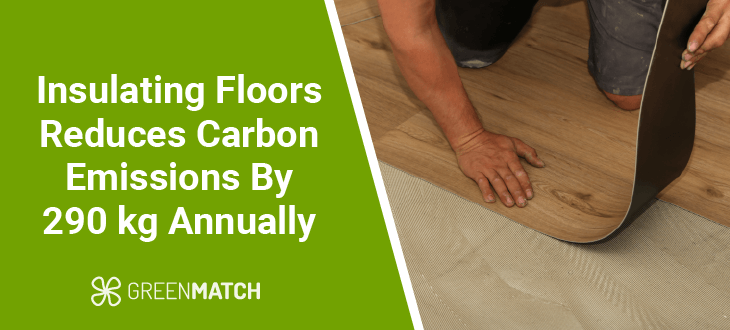
- Insulating concrete floors can save £60 - £100 annually.
- Insulation significantly reduces this heat loss and improves energy efficiency, as 10-15% of heat is lost through uninsulated floors.
- Material costs range from £5 - £25 per square metre, depending on the type of insulation.
If you’re tired of cold, uncomfortable floors and rising energy bills, the root of the problem may be a poorly insulated concrete floor. Without proper insulation, heat escapes your home, forcing your heating system to work harder, leading to higher energy costs.
Insulating your concrete floor is a good investment that addresses these issues directly. It improves energy efficiency, comfort, moisture control, and noise reduction while offering significant long-term cost savings. It’s a smart investment that enhances your home's livability and sustainability.
This guide will cover the benefits of insulating concrete floors, explore the best methods available, and explain how you can save on energy bills. We’ll also discuss the options for insulating above and below the concrete, helping you choose the right solution for your home’s efficiency and comfort needs.
Ready to make your home warmer and save on energy bills? Let us do the work! In just 30 seconds, you can get up to 3 free quotes from trusted installers. Click the button below to get started!
- Describe your needs
- Get free quotes
- Choose the best offer
It only takes 30 seconds



Why insulate a concrete floor
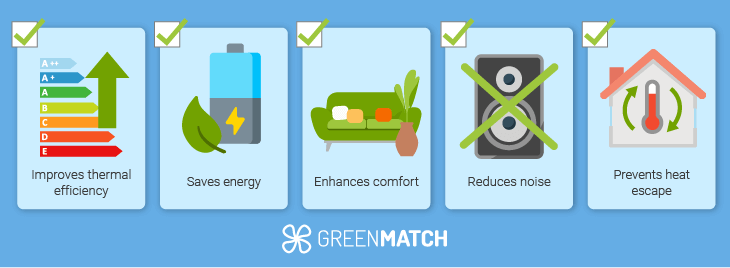
Insulating a concrete floor offers several advantages that enhance the comfort, efficiency, and longevity of your home. Let’s examine these advantages and how they can impact your home and finances.
Boost energy efficiency
Concrete floors are a common source of heat loss, particularly in colder climates. Insulating concrete floors creates a thermal barrier, keeping heat from escaping into the ground. This helps maintain a warmer indoor temperature and significantly reduces energy bills.
According to the Energy Saving Trust, insulating your ground floor can save around £60 a year for most homes, with savings of up to £100 for detached homes.
Enhanced comfort
Uninsulated concrete floors can feel cold, especially in winter. Insulation under concrete floors can improve comfort, ensuring a consistent temperature throughout the year. This helps prevent cold air from rising through the floor, making the space more enjoyable without the need for excessive heating.
Moisture control
Concrete floors are susceptible to moisture, which can lead to condensation, dampness, and eventually mould. Adding insulation creates an effective barrier against rising moisture, protecting your home from potential structural damage and improving air quality in areas prone to dampness, like basements.
Long-term cost savings
While installing concrete floor insulation may be an upfront cost, the long-term savings make it a valuable investment. Reduced heat loss lowers heating bills, helping homeowners recoup the cost.
Furthermore, insulation can help homes meet building regulations, preventing costly retrofits. According to the Energy Saving Trust, proper insulation can save households up to £100 a year in Great Britain and £145 in Northern Ireland.
Noise reduction
Concrete floors can easily transmit sound, making rooms noisier. Adding insulation enhances soundproofing, reducing noise between floors or rooms and creating a quieter, more peaceful home environment.
How to insulate a concrete floor
There are two primary methods for concrete floor insulation in the UK: insulating above and below the slab. Each method has advantages and considerations depending on the type of project you're working on. Below, we'll discuss each method in detail, followed by a simple step-by-step guide for both.
Insulating above concrete
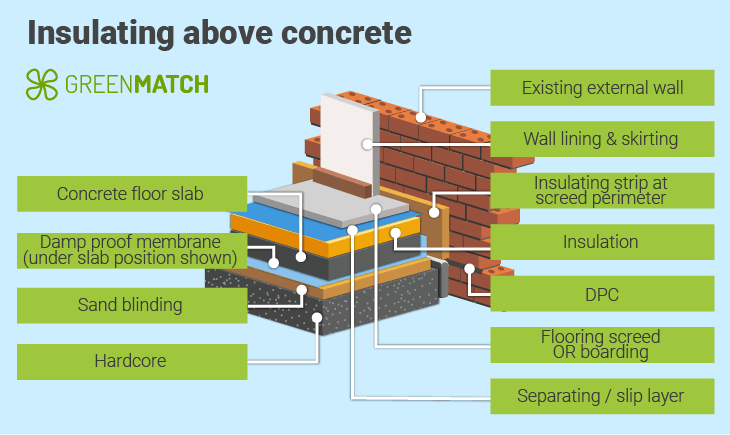
Insulating above a concrete floor is a common method for enhancing energy efficiency and comfort, whether upgrading existing insulation or installing new materials in a renovation project. Here’s a detailed guide on its advantages, considerations, and process.
- Faster room temperature regulation: Insulating above the concrete floor helps rooms warm up and cool down more quickly as the insulation is closer to the surface. This makes heating and cooling systems more effective.
- Quicker and less intrusive installation: This method typically takes less time than insulating below the slab. Also, adding insulation above the existing concrete usually requires less structural work, resulting in a smoother and more hassle-free installation.
- Impact on floor height: Installing insulation above the slab will raise the floor level, which can cause issues with door openings, thresholds, and staircases.
- Additional adjustments required: Adjustments to doors, skirting boards, and even electrical outlets may be necessary, which can add to labour and costs, especially in homes with limited vertical space or low ceilings.
Using thin floor insulation over concrete is an ideal solution to mitigate the issue of raising floor levels. Materials like phenolic foam offer high thermal performance with less thickness than traditional insulation materials. By opting for these thinner products, the increase in floor height can be kept to a minimum while still delivering excellent energy efficiency.
How to insulate above concrete
If you're looking to improve insulation without disturbing the existing slab, follow these steps:
- Prepare the surface: Clean the concrete floor and repair any cracks.
- Install a damp-proof membrane (DPM): Lay a DPM to prevent moisture from rising through the insulation.
- Position insulation boards: Place rigid foam or foil insulation for concrete floors over the DPM to form a thermal barrier.
- Add a separating slip layer: Install a slip layer between the insulation and screed for stability.
- Apply screed or boarding: Use moisture-resistant chipboard or screed to create a solid base.
- Install the final flooring: Finish with your choice of flooring, such as wood, laminate, or carpet.
Insulating below the concrete slab
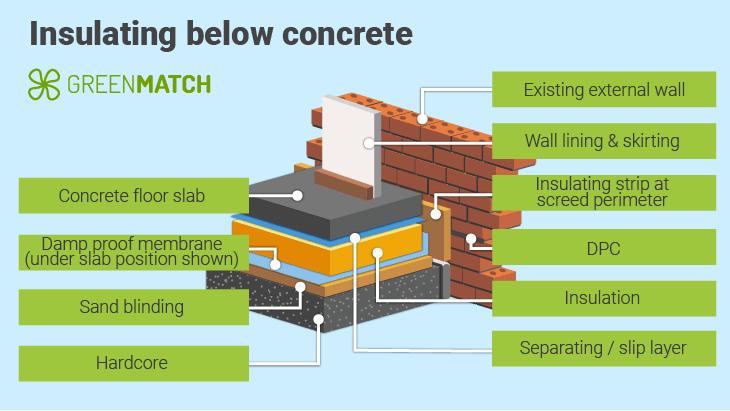
Insulating below the concrete slab is considered one of the best installation forms for long-term energy efficiency. This method allows the concrete to form a thermal mass, absorbing and gradually releasing heat. It’s particularly useful in new builds or major renovations where the slab is being replaced.
- Thermal stability: The concrete slab absorbs heat during the day and releases it slowly, which helps regulate the room’s temperature, preventing overheating in summer and keeping it warmer in winter. This provides excellent thermal stability.
- Maintains existing floor height: Unlike insulating above the slab, this method preserves the original floor height, which is especially important in new construction projects where room height is a key consideration.
- Labour-intensive: Insulating below the slab involves excavation, making it more suited for new builds or significant renovation projects. The additional effort and cost make it less practical for minor upgrades.
- Time-consuming: This method requires more planning and time than above-slab insulation, as the entire floor structure must be rebuilt, which adds complexity to the project.
How to insulate below concrete
For new constructions or complete floor replacements, follow these steps to properly insulate beneath the slab:
- Excavate and prepare the base: Dig out the existing floor and compact the hardcore base for stability.
- Lay sand blinding: Apply a layer of sand to protect the damp-proof membrane.
- Install a DPM: Place the DPM beneath the insulation to prevent moisture from rising.
- Position insulation boards: Lay rigid foam insulation above the DPM and beneath the slab for thermal protection.
- Pour the concrete slab: Pour the concrete over the insulation and let it cure.
- Install final flooring: After curing, install your chosen flooring, like tiles or wood.
Professional installation is key for the best results and long-term savings. In just 30 seconds, you can receive up to 3 free quotes from trusted local installers. Click the button below to get started!
Best floor insulation for concrete
When it comes to insulating concrete floors, several materials are highly suitable, each with specific advantages based on whether you’re insulating above or below the concrete slab. Here's a breakdown of the best insulation for floors:
Phenolic foam
Phenolic foam is an excellent choice for above-slab insulation. This thin floor insulation over concrete provides superior thermal resistance with minimal thickness, making it ideal for renovation projects where maintaining the original room height is crucial. Phenolic foam is highly efficient, although it tends to be more expensive, typically costing between £15 – £25 per m² depending on thickness.
Rigid foam insulation
Rigid foam insulation, such as PIR or Celotex, is versatile and suitable for above and below-slab installations. These rigid boards offer high thermal efficiency and are commonly used for insulation on concrete floors. Their cost ranges from £5 – £15 per m², making them a well-balanced option in terms of price and performance.
Multifoil insulation
Multifoil Insulation, like YBS SuperQuilt, is particularly effective for above-slab insulation. This multi-layer reflective foil helps reduce heat loss and is especially useful in projects where space is limited, as it can be installed in thin layers. Multifoil insulation typically costs between £12 – £18 per m², making it an attractive option for projects prioritising maintaining room height while ensuring thermal performance.
Expanded polystyrene (EPS)
EPS is a cost-effective option best suited for below-slab insulation. Due to its lightweight nature and durability, it’s frequently used in new builds or major renovations. EPS is also one of the most budget-friendly choices, generally priced at around £5 – £10 per m².
Foil-backed insulation
Foil-backed insulation, such as EcoTec Floor-Foam, is a reliable option for above-slab installations. This foil insulation for concrete floors is easy to install and prevents heat loss without significantly increasing the floor height. The cost for this type of insulation is generally between £6 – £12 per m².
Building regulation for concrete floor insulation thickness
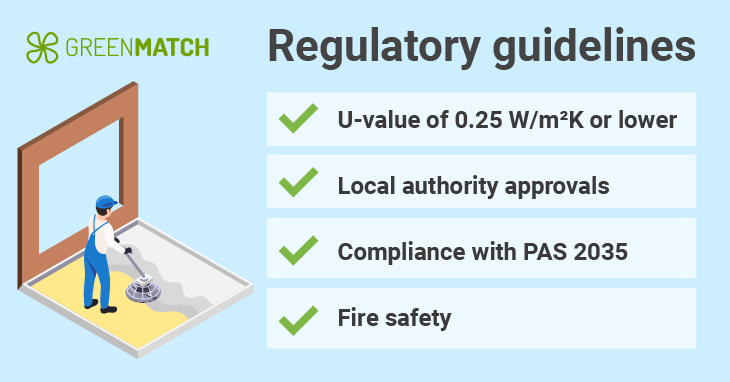
According to the Energy Saving Trust, the work must meet local building regulations when adding insulation to your floors. While installers typically handle this, it's ultimately the homeowner's responsibility to ensure compliance.
In England and Wales, floors should have a U-value of 0.25 W/m²K or lower, which measures the rate of heat loss.
Floor insulation thickness depends on whether it is installed above or below the slab. Thinner options like phenolic foam may require 50-70mm for above-slab insulation. For below-slab insulation, thicker materials such as EPS or PIR foam usually need to be 100-150mm thick to meet Building Regulations and achieve the desired U-value of 0.18 W/m²K.
Also, according to the UK’s Department for Business, Energy and Industrial Strategy, the floor insulation guide covers key areas such as fire safety and structural stability. Here's a breakdown of the relevant points for concrete floor insulation:
- Fire safety: Part B of Schedule 1 requires that buildings be designed to maintain structural stability during a fire. Any insulation for concrete floors must meet the fire safety criteria outlined in these regulations.
- Ventilation: The regulations also mandate the inclusion of adequate ventilation when retrofitting or installing new insulation, as specified in PAS 2035, especially when considering solid floor insulation.
- Local authority approvals: In England, if any work is considered "building work," such as inserting floor insulation, approvals from Building Control are often necessary. For instance, if you're altering thermal elements like floors, proper approval is required to ensure compliance.
Concrete floor insulation cost
The cost of concrete floor insulation can vary depending on the type of insulation material used, the size of the area, and whether you’re insulating above or below the slab. Here's a breakdown of the costs involved:
| Insulation type | Cost per m² |
|---|---|
| Expanded polystyrene | £5 - £10 |
| Foil-backed insulation | £6 - £12 |
| PIR foam boards | £5 - £15 |
| Phenolic foam | £15 - £25 |
Additional costs
When budgeting for concrete floor insulation, it's important to consider more than just material costs. Installation and additional materials can significantly impact the total. Here are the key additional expenses:
- Professional installation: Depending on the project's complexity, expect to pay between £25 and £50 per m² for professional installation.
- Additional materials: Costs for damp-proof membranes, screed, or chipboard should also be considered.
Why opt for professional installation?
While DIY might seem cheaper, improper installation can lead to issues such as moisture build-up or insufficient thermal performance. A professional job ensures your concrete floor insulation meets Building Regulations and avoids costly mistakes down the line.
Consider contacting a professional installer to ensure the job is done right. Skip the hassle of endless online searching—let us do the work for you! We’ll connect you with up to 4 free quotes from trusted, professional installers in your area. It takes only 30 seconds to fill out our simple form. Click the button to get started!
- Describe your needs
- Get free quotes
- Choose the best offer
It only takes 30 seconds



FAQ
Up to 10-15% of a home’s heat can be lost through an uninsulated concrete floor. Concrete naturally pulls heat away from the interior, increasing heating costs. Insulating the floor reduces this heat loss.
Underfloor insulation is highly effective in reducing heat loss and improving energy efficiency. It turns the concrete into a thermal mass, which helps regulate indoor temperatures year-round.
To insulate over a concrete floor, clean the surface, lay a damp-proof membrane, install rigid foam boards or thin insulation like phenolic foam, and top with a screed or chipboard for stability. Finally, install your preferred flooring.
For above-slab insulation, 50-70mm is generally recommended, while below-slab insulation typically requires 100-150mm to meet building regulations and achieve a U-value of 0.18 W/m²K.

Nicole Bea Kerr is a content writer for Greenmatch, leveraging her experience in B2B journalism and editing. She is interested in bringing more awareness to sustainability through informative narratives.
We strive to connect our customers with the right product and supplier. Would you like to be part of GreenMatch?

